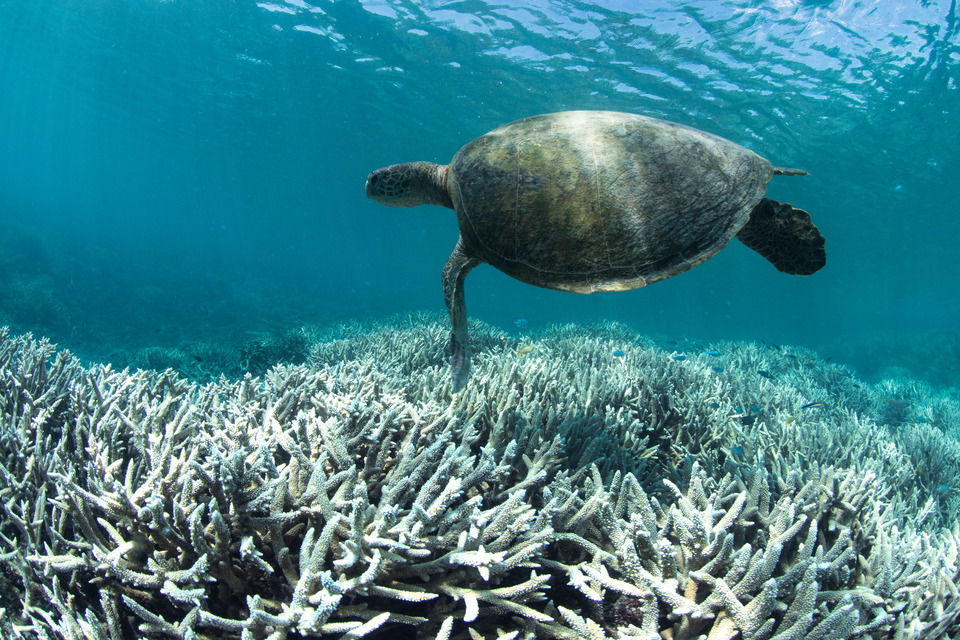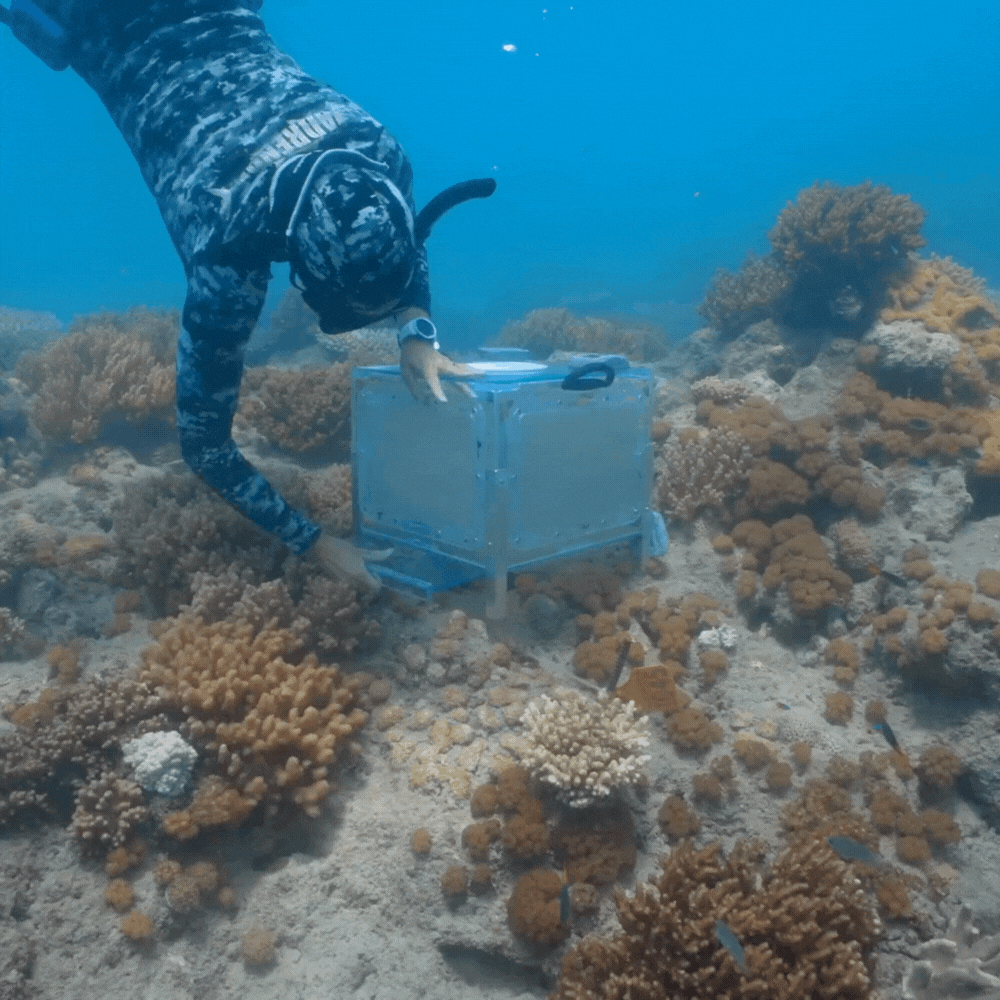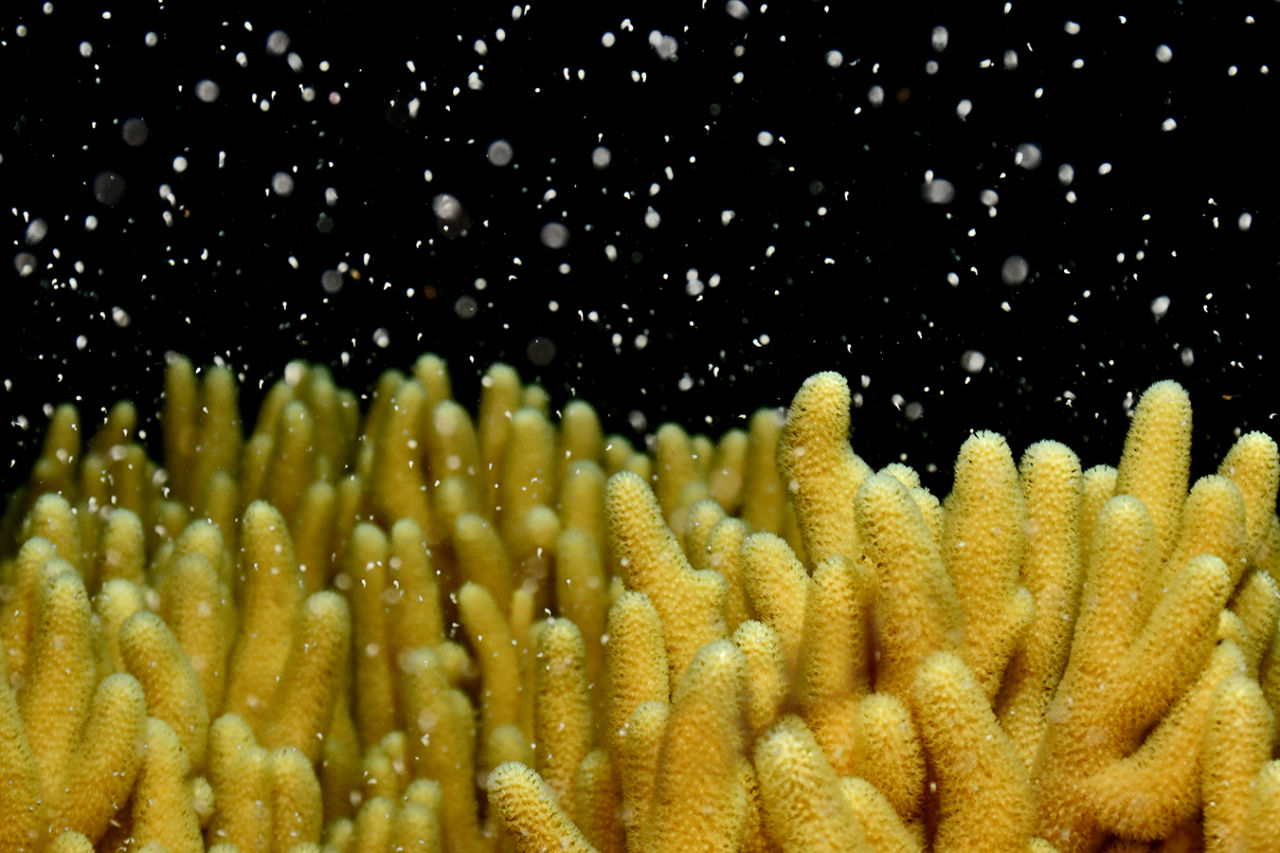The annual coral spawning event, triggered by the full moon and seasonal warming of the ocean sees the Great Barrier Reef's magnificent corals burst into life in an underwater 'snowstorm' by releasing trillions of eggs and sperm bundles into the water in a mass breeding phenomenon.
Each bundle must find another bundle from the same species to fertilise. By spawning on mass, corals increase the likelihood of finding and fertilising a matching bundle.
This natural spectacle is not just magical to witness - it's vital for the Reef's recovery. It marks one of the only times throughout the year that we can test new coral restoration solutions at scale.
If you're interested in learning more about this extraordinary event and how we are harnessing this moment to fast-track recovery, explore our most frequently asked questions below.
#What triggers coral spawning?
Coral spawning follows a full moon and water temperatures must have risen enough to stimulate the maturation of the egg and sperm bundles. The timing of spawning is also impacted by the length of the day, the tide and salinity levels in the water.

Coral spawning on Moore Reef in 2024. Credit: Stuart Ireland, Calypso Productions.
#How long does coral spawning last?
Spawning only happens at night and lasts from a few days up to a week. Different species of coral spawn on different days to prevent cross-breeding.
On the Great Barrier Reef, inshore reefs typically spawn in October, while outer reefs spawn during November or December.
#If corals are bleached, does that mean they have died? Or can they regenerate?
When corals are stressed, they expel tiny algae called zooxanthellae from their tissues. Without the algae to provide colour, coral polyps turn clear again and reveal their white skeletons. This is called coral bleaching. Bleached corals are not dead, but without zooxanthellae, corals begin to starve and are more at risk of disease.
A primary cause of coral bleaching is heat stress from raised water temperatures and increased UV radiation. A temperature increase of just one degree Celsius for only four weeks can trigger coral bleaching. If raised water temperatures persist for long periods (eight weeks or more) corals begin to die.
Corals can recover from bleaching over time, but only if temperatures drop and conditions return to normal.

Green turtle swimming over bleached acropora coral. Credit: Christophe Bailhache / Underwater Earth.
#What is being done to protect and restore the Reef?
Over the last five years, the world's largest team of reef scientists and engineers have been working together to pioneer technologies to make reef restoration faster, stronger and cheaper than ever before. We've made more progress in these five years than in the previous 50.
One of the innovative techniques that emerged from this research is a method known as Coral IVF. During coral spawning, we capture coral eggs and sperm from healthy reefs and rear millions of baby corals in specially-designed floating pools on the Reef and in tanks. These floating pools encourage a higher rate of fertilisation. When the coral larvae are mature enough, they are delivered to damaged reefs where they can attach and grow.
But survival on the Reef is tough: less than 1% of corals survive their first year of life. To give them a helping hand, we've developed deployment tools that protect vulnerable coral babies from predators and destructive waves.
One of these tools is a ceramic cradle-like device that can improve the odds of survival by safely housing newly settled corals after they've been planted on the Reef. These devices are deployed from the ocean's surface, eliminating the need for divers.
Another tool currently being trialled is the 'larval seedbox'. Developed in partnership with CSIRO and Southern Cross University, this tool acts as a delivery system for fertilised coral and is deployed directly onto the Reef in strategic areas, delaying the release of coral larvae to maximise settlement.
To reach the vast scale needed to restore the Reef, we are training local tourism operators, Traditional Owners, government agencies and recreational boaters in these methods.

Researchers deploying 'larval seedboxes' on the Reef in the Whitsundays. Credit: Johnny Gaskell.
#How do you know if you've had a successful spawning season?
Coral spawning happens once a year over a period of just a few days, which means we have a very small window to act.
One key element of success is predictability. We know almost exactly when and what time corals will spawn, and which species will release their bundles. If the corals spawn as expected, we can collect the eggs and sperm for our Coral IVF work. If spawning does not align with predictions, that opportunity is lost.
Another element of success is the amount of coral spawn. To restore at scale, we need millions of coral egg and sperm bundles floating to the surface in calm ocean conditions that are gentle enough to allow fertilisation and settlement.
But the ultimate proof of success comes months and years later, when we return to the site to see if the baby corals have settled, survived and eventually begun reproducing themselves. That's when we know a spawning season has truly been successful.

Coral spawning in the Whitsundays. Credit: Johnny Gaskell
#If bleaching keeps happening, how do we know restored corals won't just die again?
Climate change is the greatest threat to the future of the Great Barrier Reef. We know that many corals can't naturally adapt fast enough to keep up with rising ocean temperatures.
However, using selective breeding, aquaculture and advanced laboratory techniques, we can identify corals that have naturally survived previous bleaching events and grow their offspring in large numbers. These new generations of corals often show stronger heat tolerance.
By 2030, we aim to deploy heat tolerant corals on 50 vital reefs across the Great Barrier Reef and the Pacific. By restoring reefs with these more heat-resilient corals, we can help boost their ability to cope with warming oceans while the world acts on climate change.
#Doesn't focusing on restoration take attention away from the bigger issue of climate change?
Not at all, both are essential and must happen in parallel with each other. Reducing emissions and tackling the root causes of climate change remains a global priority, and without action, no amount of restoration will be enough.
However, even if the world stopped producing emissions tomorrow, the ocean will continue to warm for decades due to inertia in the climate system. Corals simply can't adapt fast enough to the current rate of warming. That's why restoration is critical, as it helps boost the Reef's resilience now, giving corals a fighting chance while global efforts to curb emissions take effect.
We must do both to protect this precious ecosystem.
#What can I do to help the Great Barrier Reef?
We've made significant progress advancing methods to restore reefs, but coral reefs remain one of the most vulnerable ecosystems on the planet. It's not too late to protect coral reefs and the marine life that calls them home, but our window to act is closing.
Every donation, big or small, helps fuel the science and research that will power the future of restoration for our world's coral reefs.
Together, we can keep the wonder alive. Not just for today, but for every generation that follows.
Hope is alive on the Reef and with your help, it can grow.






